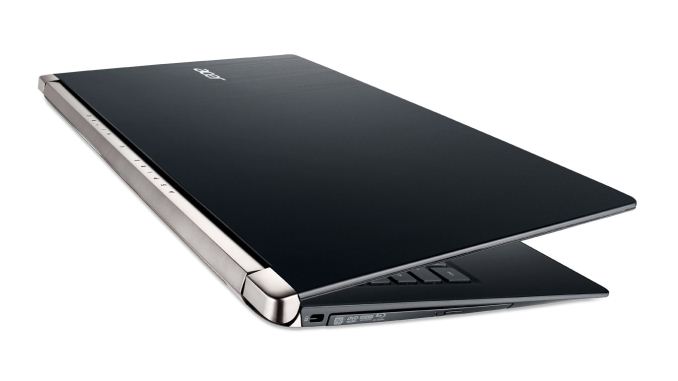NVIDIA Launches GTX 960M/950M and GeForce 940M/930M/920M
Today NVIDIA officially launched their latest mobile GPUs, the GTX 960M and 950M; on a quieter note, the 940M, 930M, and 920M also showed up. NVIDIA launched the high-end GM204 back in September/October last year and brought out the mobile GTX 970M and 980M using the chips, and they more recently launched the desktop GTX 960 using a new GM206 part with up to 1024 CUDA cores. Considering the GTX 965M has 1024 CUDA cores many felt it would use GM206 as well, but that didn’t happen; in a similar fashion, those expecting (hoping) GTX 960M and 950M would use a derivative of GM206 are also going to be disappointed and it continues to use the GM107 chip.
The new GeForce GTX 960M and 950M end up being clock speed bumps from the existing GTX 860M/850M, though this time the 960M is purely Maxwell based and there’s no Kepler alternative. The GTX 950M has 640 CUDA cores running at 914MHz (+ Boost), and it can be paired with either DDR3-2000 (yuck!) or GDDR5-5000, both using a 128-bit interface. While the additional bandwidth of GDDR5 may not matter too much at lower resolutions, we’ve seen in the past that it can have a significant impact on performance at 1080p and medium or higher settings.
Interestingly, the clocks and core configurations mean that potentially the GTX 950M is actually a bit slower than GTX 850M (640 cores at 936MHz + Boost compared to 914MHz + Boost), but NVIDIA doesn't disclose the full range of base clocks and Boost clocks so the 950M will hit higher clocks on average compared to 850M. 960M meanwhile represents a minor bump in clock speeds over GTX 860M, going from 1029MHz + Boost to 1096MHz + Boost; the RAM stays the same with GDDR5-5000 providing 80GB/s of bandwidth. Keep in mind that both the 850M and 860M are marketed with "up to xxx MHz" language where NVIDIA has now switched to advertising the base clock (no "up to"). Even so, the newer parts are likely only 10% (give or take) faster than the previous generation parts.
NVIDIA’s product pages for the three lower tier GPUs reveal precious little in the way of specifications; all we know is that the parts are DirectX 12 capable and that the 920M is rated as being ~3X the performance of Intel’s HD 4400 while the 930M and 940M are 3.5X and 4X the performance rating of the HD 4400. The 940M and 930M are derived from GM108 and will replace the existing 840M/830M, while the 920M is a Kepler design that replaces the existing 820M. While NVIDIA’s specifications rate the 840M at 5.0X the performance of the HD 4400 where the 940M is "only" 4.0X the performance of HD 4400, NVIDIA changes the games used for the performance score calculations each generation so they're not directly comparable; the newer parts however are all designed to be faster than the existing parts.
Here are the full specifications for the old and new GM107 based parts, the GeForce GTX 960M/950M and the 860M/850M:
| NVIDIA GeForce GTX 960M/950M Specifications | ||||||
| GTX 960M | GTX 950M (GDDR5) |
GTX 950M (DDR3) |
GTX 860M (Maxwell) |
GTX 860M (Kepler) |
GTX 850M (GDDR5) |
|
| Processor | GM107 | GM107 | GM107 | GM107 | GK104 | GM107 |
| CUDA Cores | 640 | 640 | 640 | 640 | 1152 | 640 |
| GPU Clock (MHz) | 1096 + Boost | 914 + Boost | 914 + Boost | Up to 1029 + Boost | Up to 797 + Boost | Up to 936 + Boost |
| GDDR5 Clock | 5GHz | 5GHz | 2GHz | 5GHz | 5GHz | 5GHz |
| Memory Interface | 128-bit | 128-bit | 128-bit | 128-bit | 128-bit | 128-bit |
| Maximum Bandwidth | 80GB/s | 80GB/s | 32GB/s | 80GB/s | 80GB/s | 80GB/s |
| Maximum Memory | 4GB | 4GB | 4GB | 4GB | 4GB | 4GB |
| eDP 1.2 | Up to 3840×2160 | |||||
| LVDS | Up to 1920×1200 | |||||
| VGA | Up to 2048×1536 | |||||
| DisplayPort Multimode | Up to 3840×2160 | |||||
Along with the new parts, NVIDIA and their partners have announced several new laptops using the “new” GPUs. Below are images of the new Acer Nitro V, Alienware 13, ASUS G501, HP Omen, and Lenovo Y50. Obviously there won’t be a major difference in performance between the new GTX 900M parts and the existing GTX 800M parts, so this is most likely just NVIDIA aligning the product names for use with the upcoming Broadwell systems.







